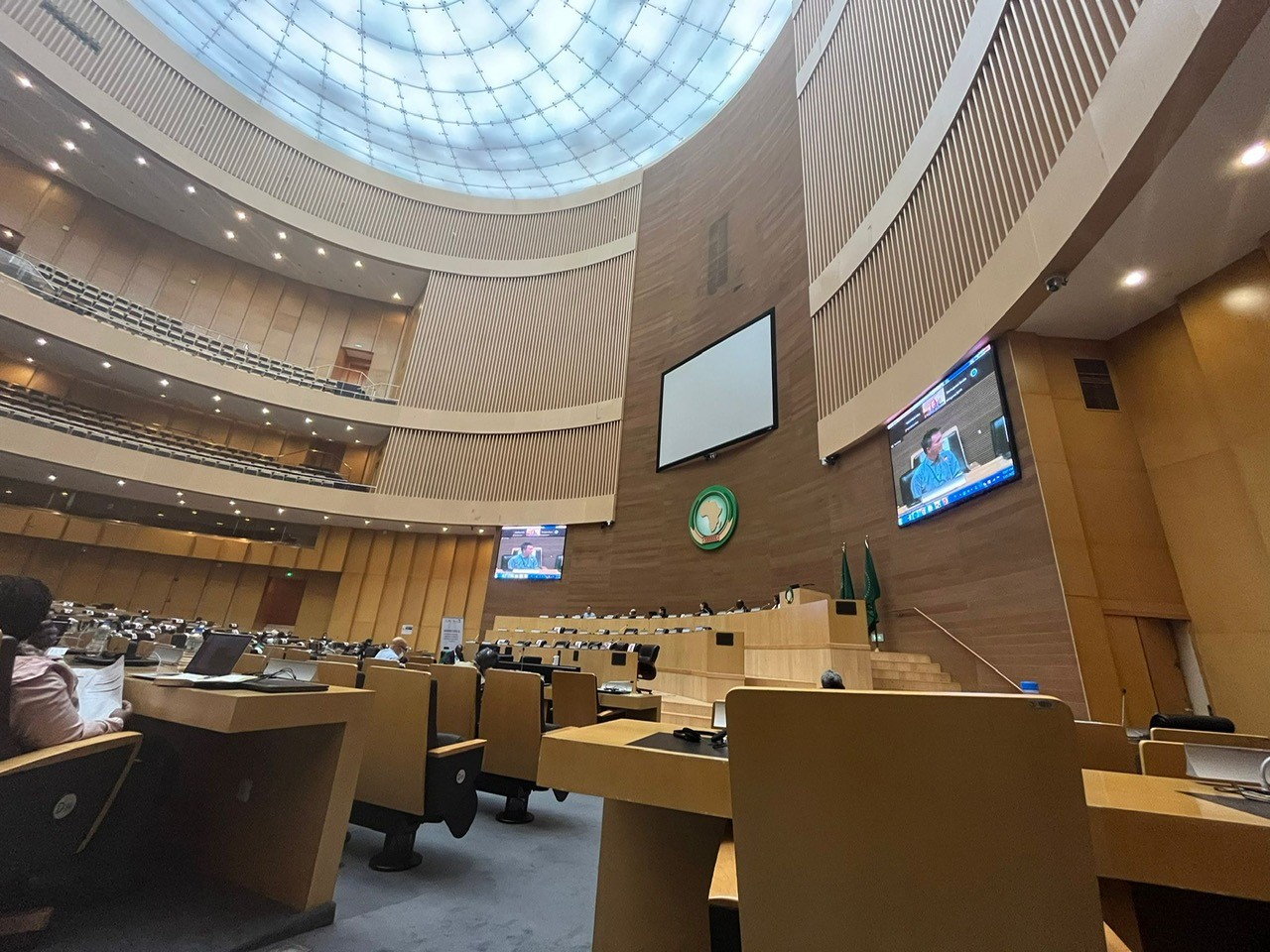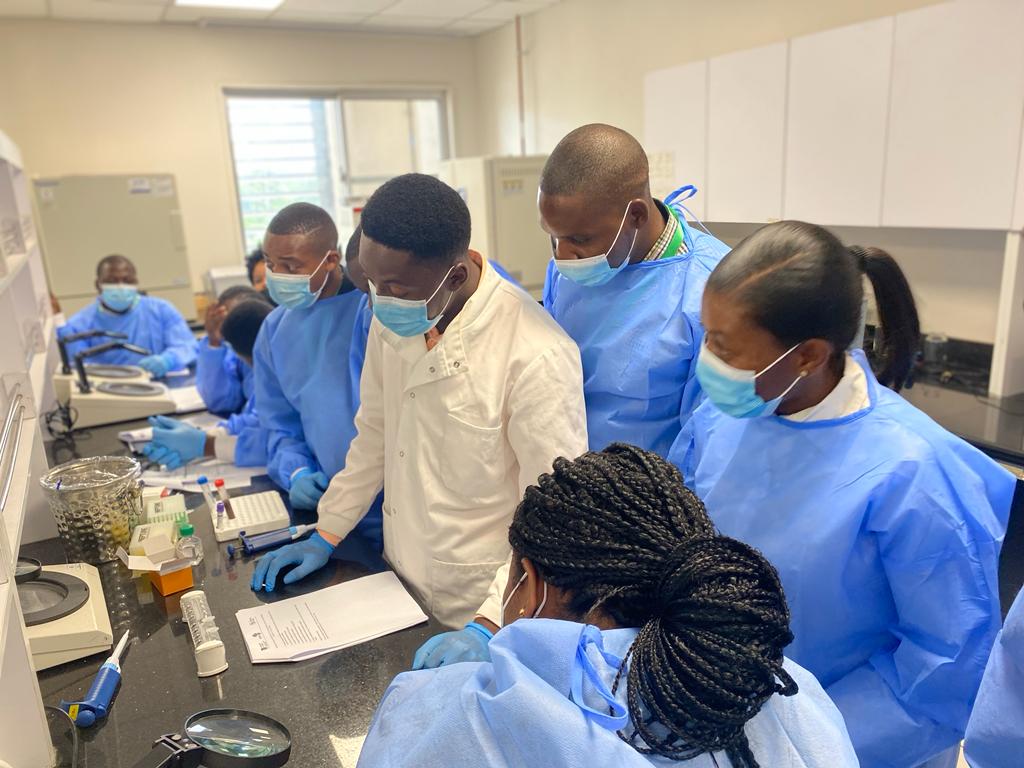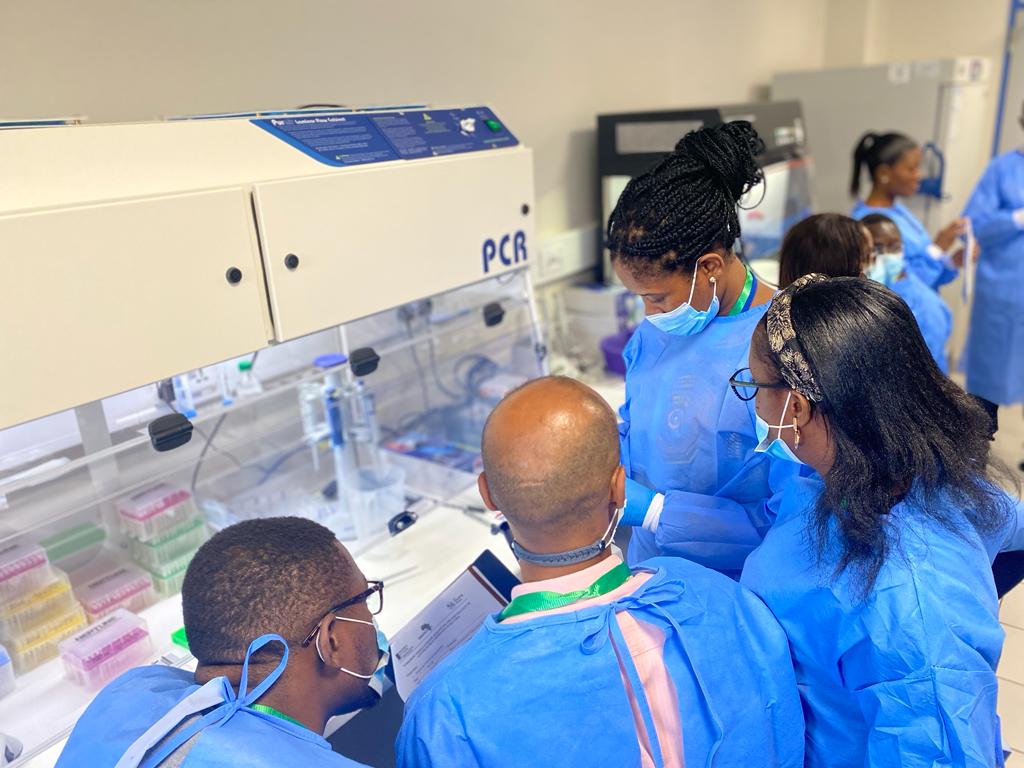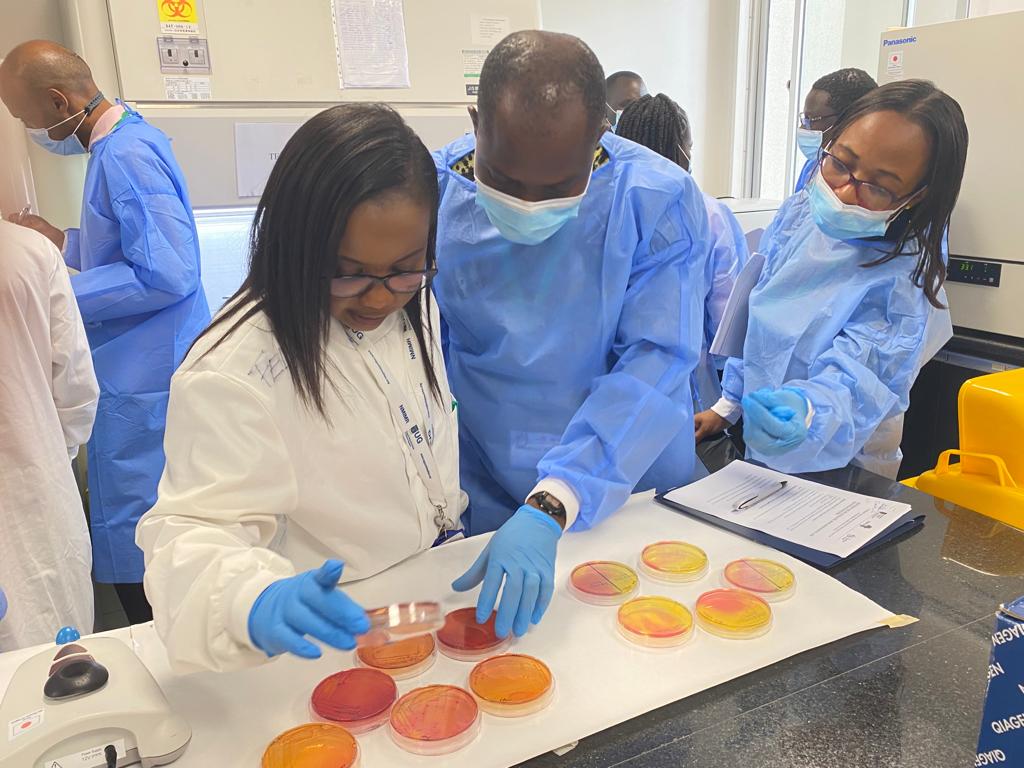The Fleming Fund has awarded an AMR surveillance project, ‘SEQAFRICA’, with an additional £2.4 million. SEQAFRICA uses the innovative technology whole genome sequencing (WGS) to improve antimicrobial resistance (AMR) surveillance and invests in training African scientists to help triple the capacity for gene sequencing across the continent.
Going into battle: future of pathogen genomics and bioinformatics in Africa AMR
The Technical University of Denmark (DTU), Fleming Fund regional grantee, presented on the SEQAFRICA project at the symposium ‘Beyond COVID-19: Pathogen Genomics and Bioinformatics for Health Security in Africa’, hosted at the African Union Commission in Addis Ababa, Ethiopia.
At the symposium’s Africa Pathogen Genomics Initiative (Africa PGI) workshop, the DTU team highlighted the SEQAFRICA programme’s achievements, including developing Whole Genome Sequencing (WGS) and bioinformatics capacity for antimicrobial resistance (AMR) surveillance across Africa through genome analysis and laboratory training. This has led to 18,500 bacterial genomes sequenced from 17 African countries to progress AMR research.
Image caption: Prof Rene S. Hendriksen presents the Fleming Fund SEQAFRICA project’s achievements and phase II strategy during the PGI symposium in Addis at the African Union, strengthening collaboration and sustainability with the Union, Africa CDC, and ASLM. Copyright: Noguchi Memorial Institute for Medical Research (NMIMR).

DTU will build on the WGS capability using Oxford Nanopore Technologies (ONT) for its next phase, with the intention of making the MinION technology available across clinical microbiology laboratories in Africa.
With the ability to exchange and manage large (‘big’) data quantities online increasing dramatically over recent years, next-generation sequencing methods have come into play. The MinION provides portable, automated genome sequencing for longer DNA strands to better detect genetic variation for bioinformatics analysis. This increases and improves the AMR data surveillance sites’ capacity and capabilities.
We spoke to project lead Prof Rene S. Hendriksen, Head of Research Group Global Capacity Building, National Food Institute at DTU, about the success of the SEQAFRICA training programme - pushing forward genomics capability in supporting low- and middle-income countries (LMICs) to jump decades forward in AMR diagnostics.
Democratising genomics
In an ongoing strategic partnership with the Africa Centre for Disease Control and Prevention (ACDC) and the African Society for Laboratory Medicine (ASLM), phase II of SEQAFRICA increases its scope; democratising WGS to enhance AMR data surveillance sites in Fleming Fund countries.
The advanced genomics method is intended to front AMR diagnostics by deploying the portable ONT MinION technology in more countries and regional sites to further supplement the data surveillance network.
In phase I of the SEQAFRICA project, the team established five regional WGS reference centres in Eastern, Western, and Southern Africa, with laboratory staff participating in basic and advanced WGS training, bioinformatics analysis, and genomic epidemiology for AMR research.
Using sequencing technology from the biotechnology company Illumina at our regional WGS reference centres, we reached a milestone of 18,500 genomes generated in phase I, covering 16 bacterial species (including COVID-19) from 17 African countries.

Image caption: The NMIMR workshop on ‘Whole Genome Sequencing for Surveillance of Antimicrobial Resistance in Bacteria’, hosted in partnership with Fleming Fund SEQAFRICA project. Copyright: Noguchi Memorial Institute for Medical Research.
In phase II, SEQAFRICA will expand and strengthen the focus on pathogen genomics. By deploying the genomics ONT to Fleming Fund surveillance sites, the team will study organisms from the World Health Organization's Global Antimicrobial Resistance and Use Surveillance System (WHO-GLASS) and the priority pathogens of the United Nations’ FAO.
AMR diagnostics
WGS is used to identify strains of microorganisms, such as bacteria or viruses, by studying their genetic makeup. This excels AMR data surveillance by advancing AMR diagnostics and clinical tests of pathogen organisms.
WGS is highly sensitive and correctly identifies antimicrobial-resistant ‘determinants’ within a pathogen. By detecting resistance with significantly greater precision, it can reveal the connection of specific genes underlying the pathogens’ genetic make-up over time. Through this, LMICs can leapfrog on the back of nanopore technology and jump several decades forward in AMR diagnostics.

Image caption: The NMIMR workshop on ‘Whole Genome Sequencing for Surveillance of Antimicrobial Resistance in Bacteria’, hosted in partnership with Fleming Fund SEQAFRICA project. Copyright: Noguchi Memorial Institute for Medical Research.
Global commitment
In doing so, however, genomics and bioinformatics research can present challenging obstacles that require a global commitment to overcome. This includes the provision of instrumentation and consumables, procurement and supply chain issues, lack of AMR data, staff retention and sustainability from country buy-in.
We can provide the AMR surveillance capacities and evidence, but ultimately, we need governments and policymakers to work with us to help sustain funding for research capacity - understanding the value of the public health and economic benefits.
SEQAFRICA will continue to address these barriers by engaging and influencing the health industry and providers to facilitate a government-backed genomics provision and procurement process.
"We can provide the AMR surveillance capacities and evidence, but ultimately, we need governments and policymakers... to help sustain funding for research capacity - understanding the value of the public health and economic benefits."
‘Flying bioinformatician’
The project also provides various training opportunities for junior staff members and accelerates learning with the ‘train the trainer’ concept, as well as ’South to South training’ used by policymakers and academics as an exchange of resources, technology, and knowledge between LMICs.
Regional WGS reference centres and surveillance sites will also have access to a ‘flying bioinformatician’ – a bioinformatician mentoring resource with a decade of experience in WGS and high-performance computing.
To also help address provision and procurement issues as major barriers, SEQAFRICA’s MinIon sequencing provider ONT, as well as Illumina, will be pivotal in supporting the expansion and democratisation of WGS to AMR data surveillance sites in Fleming Fund countries across Africa.
This fruitful partnership has led to the preparation of an AMR roadmap to ensure a steady stream of laboratory instruments and consumables for WGS at the sites.
Target pathogens
Not only are we proud of our success of well-functioning regional WGS reference centres for AMR research, but also of our tiered regional bioinformatics training including three virtual training modules – one of which looks at the detection of AMR determinants when the genes and the mutation come together – available online at the SEQAFRICA website for future use.
We are committed to strengthening our services even more in phase II by expanding the WGS facility to surveillance sites and widening the training network with genomics epidemiology courses for health professionals.
We also plan to set up both human and animal health sites in each of the Fleming Fund priority countries, identified in consultation with the Fleming Fund country grants, jointly with ASLM for human health and FAO for animal health.

Image caption: The NMIMR workshop on ‘Whole Genome Sequencing for Surveillance of Antimicrobial Resistance in Bacteria’, hosted in partnership with Fleming Fund SEQAFRICA project. Copyright: Noguchi Memorial Institute for Medical Research.
African ambition
The Africa PGI workshop consortium meeting in Ethiopia helped push these ambitions forward by consolidating the plans for phase II.
Enabling the SEQAFRICA programme to build upon the regional WGS reference centres in place, we can continue AMR data generation, WGS and bioinformatics services, bioinformatics training and peer support, as well as developing professionals and leadership through the fellowship scheme.
Genomic data generation will play a crucial role in influencing and driving AMR policy and national action. Our regional WGS reference centres and surveillance sites will increase more targeted data toward priority pathogens of emerging AMR in Africa’s human and animal health sectors.
Sharing robust and active surveillance data as a basis for AMR risk management with vital stakeholders such as the African Union, Africa CDC and governments gives policymakers a powerful weapon in their arsenal. We hope SEQAFRICA can help lead them into battle - contributing to public health actions to mitigate AMR globally.
More Like This
Programme Update
From Programme Update, Genomics making an impact on AMR in West Africa , Date: 24/03/2025
We spoke to Dr Beverly Egyir about her role as head of the SeqAfrica hub in Ghana, based at the Noguchi Memorial Institute for Medical Research (NMIMR). A Senior Research Fellow in the Bacteriology Department at the University of Ghana, Beverly manages genome sequencing of bacterial species across West Africa to enhance AMR surveillance and building capacity.